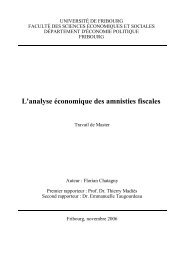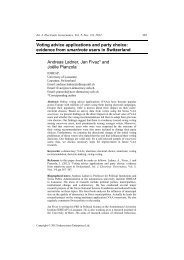organisational functions - Alpine-space.org
organisational functions - Alpine-space.org
organisational functions - Alpine-space.org
Create successful ePaper yourself
Turn your PDF publications into a flip-book with our unique Google optimized e-Paper software.
2. Preliminary guidelines for each function<br />
Priorities must be defined and ranked for each function. A strategy document<br />
should be prepared for each function describing how the actions undertaken<br />
within that function contribute to the project as a whole.<br />
Guidelines covering the following aspects should be drawn up at the beginning of<br />
the project:<br />
• Relevant laws and regulations<br />
• Draught task-sheets, including main difficulties/major challenges<br />
• Key stages<br />
• Principle risks and opportunities<br />
• Minimum level of service and how it is to be provided<br />
• Evaluation of the human and material resources required<br />
• Estimate of the cost and the terms of finance<br />
• Recommendations regarding local particularities<br />
• When the function manager must be appointed<br />
3. The operational plan<br />
The guidelines are used to draw up an operational plan, in the form an operations<br />
manual. This plan should cover the points included in the guidelines in more<br />
detail, i.e. it should be more concrete and more practical. It should describe all<br />
the procedures and actions to be carried out during the period of the event to<br />
ensure volunteers are successfully integrated into the <strong>org</strong>anising team.<br />
4. Remarks on some key <strong>functions</strong><br />
a. Sponsoring<br />
The objective of the sponsoring function is to sell the event to private and<br />
public partners, who, in return, can develop their own public relations<br />
strategy around the event. Therefore it is essential that the partner’s public<br />
relations strategy is in accord with the values supported by the event. It is<br />
often more effective to call upon the services of a specialist agency than to try<br />
to run this function internally.<br />
b. Television coverage<br />
The television audience for the event will be much larger than the actual<br />
number of live spectators. It is through this television audience that the<br />
event’s partners expect to get the largest return on their investment in terms<br />
of developing their image. Particular attention must be paid to partner<br />
exposure, especially when negotiating agreements between the rights holders<br />
and television channels.<br />
Although television rights provide a significant source of income for the largest<br />
sports events (Olympic Games, World Championships, etc), for smaller events,<br />
the <strong>org</strong>anisation of television coverage is only an expense. However, it is<br />
generally an indispensable expense as television coverage can be a major<br />
factor in attracting public partners and private sponsors.<br />
28 SENTEDALPS

















